Meet the Dinosaurs of Prehistoric Planet Season 2
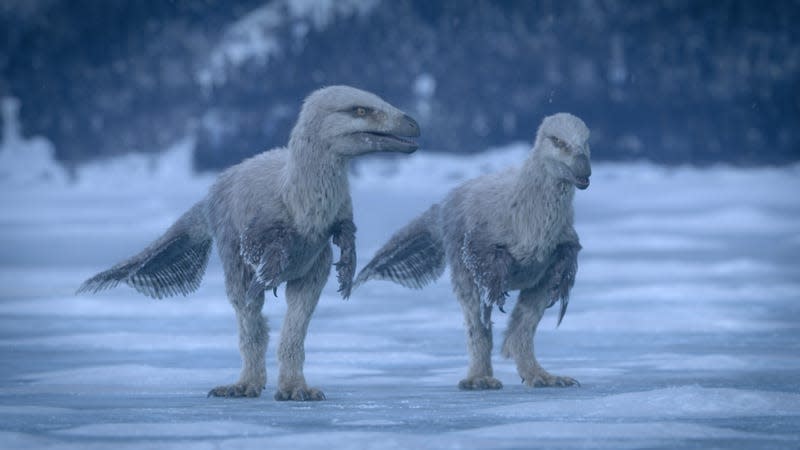
- Oops!Something went wrong.Please try again later.
Behold the newest snarling, scurrying, foraging, and feasting dinosaurs and other extinct creatures of Prehistoric Planet.
The show’s second season begins May 22 on Apple TV+, featuring over two dozen new species from various branches of the tree of life as it existed some 66 million years ago, give or take a few million (well, don’t take more than a couple.)
Read more
I spoke with showrunner Tim Walker and Darren Naish, a paleozoologist and the series’s chief scientific consultant, to learn what to expect from the new season and, potentially, more seasons or shows down the line.
“It’s going to feel really different,” Naish said. It will offer “a deeper, more intimate view of this world, with so many new behavioral interactions that carry through a number of really crucial messages about what the world of the late Cretaceous was like.”
Pop culture is rife with misrepresentations of ancient organisms. Prehistoric Planet’s first season aimed to correct the narrative, spotlighting a bevy of beasts, including the massive pterosaur Quetzalcoatlus, the cassowary-like Corythoraptor, and the theropod Tyrannosaurus rex. (We’re talking about the late Cretaceous; there’s always a T. rex.)
Prehistoric Planet — Season 2 Official Trailer | Apple TV+
The second season picks up where the first left off and adds 25 fresh species to the cast, along with familiar faces from the first season. Chief among the new troupe are oft-overlooked inhabitants of the Dinosaur Age—perhaps because they’re not dinosaurs.
In the premiere, the herbivorous crocodylomorph Simosuchus and the mammal Adalatherium show up in a rather charming tableau of Cretaceous-era Madagascar, where life was able to evolve independently (and thus, uniquely) from life on the African continent.
Dynamic moments like Adalatherium hiding from a predator and Corythoraptors getting their eggs stolen from under their noses—erm, beaks—play out in night vision, lending the scenes the feeling of a genuine nature documentary.
“We’re starting to get to the pinnacle of CGI production in terms of photorealism,” Walker said, “incorporating the other aspects of wildlife filmmaking techniques is all part of the time-traveling natural history genre that we created.”
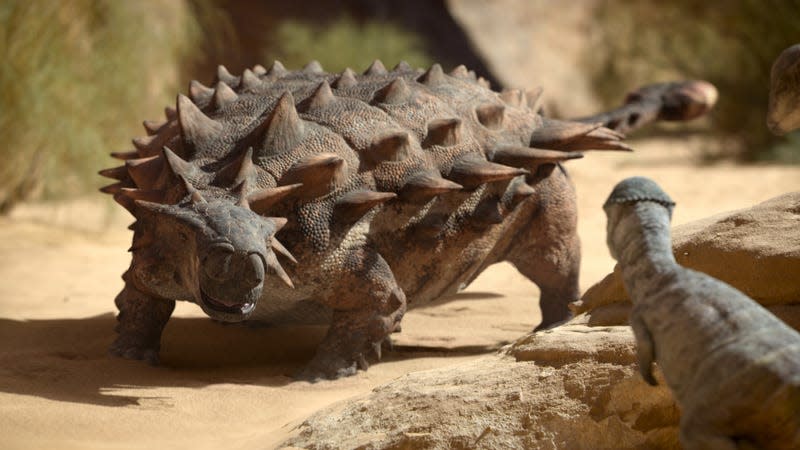
The new season highlights interactions between species—many of which were not so friendly.
But showcasing dinosaurs and their contemporaries in all the scaly, feathery, and furry trappings of top-notch CGI wouldn’t be enough. Both Naish and Walker spoke to the intimate storylines of the various creatures: their regular failures and good fortune in the struggle to survive, at least long enough to procreate. Little moments, like the slight stumble of a velociraptor, endear the creatures to us as we can’t help but human meanings to their behavior—just like we do with viral animal videos.
Naish said the team built out the Prehistoric Planet models using modern creatures as analogues. Some pterosaurs “probably behaved in stork-like fashion,” Naish explained, and the stocky Simosuchus took cues from modern crocodilians and armadillos.
“One of the key take-homes for me—and I hope people will pick up on this—is how complex it was, because, contrary to the sort of old-fashioned view that the complexity was far less in the past than it is today, all the studies that are being done on that now are contradicting that,” Naish said. “The late Cretaceous world was as complex as that of today. We’ve just lost most of that complexity because of, you know, extinctions. So life has got to build itself up from a starting point again.”
Each episode also has a segment of Prehistoric Planet: Uncovered, a sequence they had previously developed but only added for season 2. This might ring familiar to HBO fans; it is a “how we made it” in the spirit of the behind-the-scenes explorations of Game of Thrones and Succession. But, of course, Prehistoric Planet: Uncovered is bolstered by researchers describing the scientific consensus and how it was incorporated in the show, rather than the CGI dinos’ tremendous acting.
Click through to see some of our favorite characters from Prehistoric Planet’s second season.
T. rex and Quetzalcoatlus
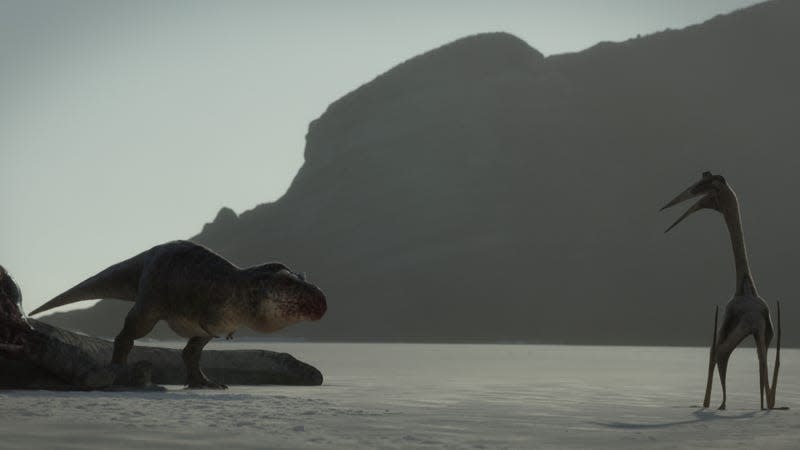
One season two scene depicts a standoff between two very different creatures, both terrifying in their own way. On the left: the familiar visage of Tyrannosaurus rex, an apex predator of the Late Cretaceous. At right: the slightly less-famous profile of Quetzalcoatlus northopi, the largest flying creature to ever live (as far as we know); it was a pterosaur that stood as tall as a giraffe and had a 40-foot wingspan, roughly equivalent to that of some fighter jets.
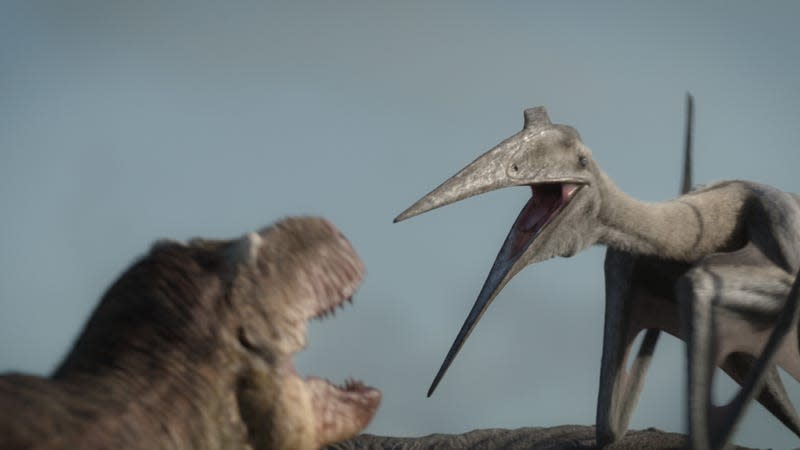
Okay, yeah, they’re definitely not friends.
Tarchia

The ankylosaur Tarchia features in the new season’s second episode.
An armored addition to the Prehistoric Planet pantheon is Tarchia, the largest-yet-known ankylosaur. A desert-dweller, Tarchia had a spiny, plated back and a massive club tail. The spines of at least some ankylosaurs grew directly out of their ribs, in one of the more metal creations of evolution.

The new season highlights interactions between species—many of which were not so friendly.
Pectinodon
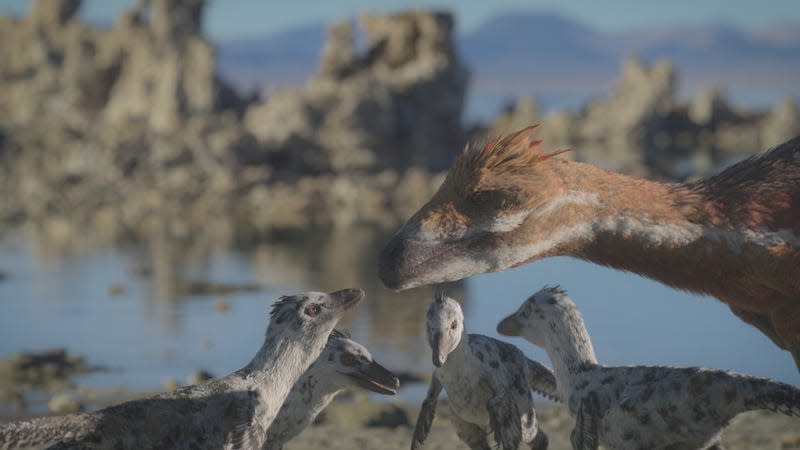
Meet Pectinodon, a troodontid dinosaur of the late Cretaceous. Here, an adult Pectinodon interacts with juveniles—note the different colorations of the animals, just as how many juvenile birds (which are dinosaurs) will sport different plumage when young than when they are mature.
Triceratops
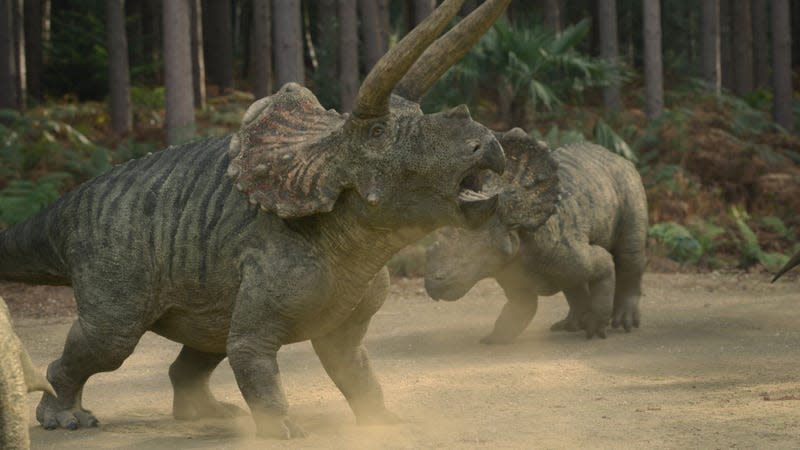
You probably recognize Triceratops; the animal’s unique head crest and horns set it apart from most other popular dinosaurs. Triceratops featured in Prehistoric Planet’s first season, but in a snowy environment. Here, they are seen in a fern-filled forest.
Alamosaurus
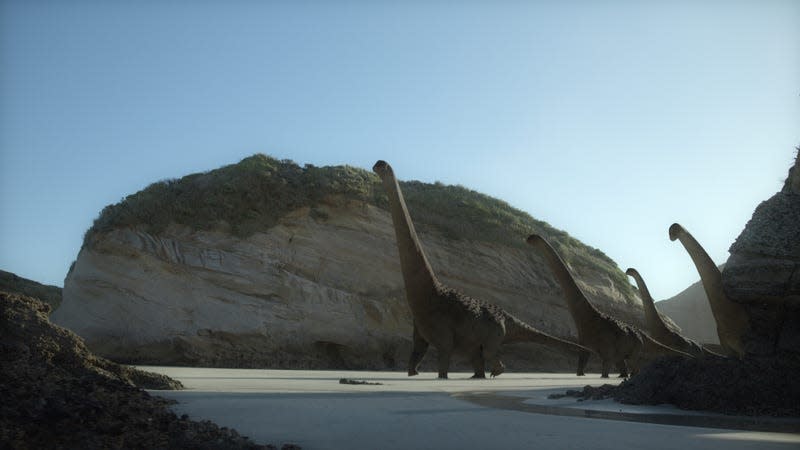
Behold: America’s largest dinosaur. Alamosaurus was a nearly 100-foot-long titanosaur, a unique group of sauropods set apart for their gargantuan size. These creatures, which include fan favorites like Megaloolithus and Patagotitan, are the biggest land animals currently known to science.
Ammonites
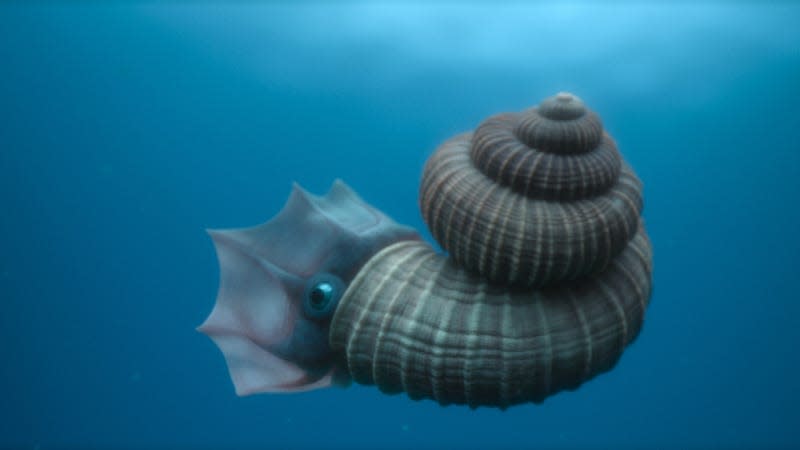
An ammonite featured in the second season of Prehistoric Planet.
Aha! You were about to yawn and roll your eyes because this was just a list of dinosaurs, right? Wrong! The new season also features terrestrial mammals, crocodylomorphs, and—as you can see here—ammonites, an extinct species of marine mollusk that were plentiful in the Cretaceous Period.
Mortuneria
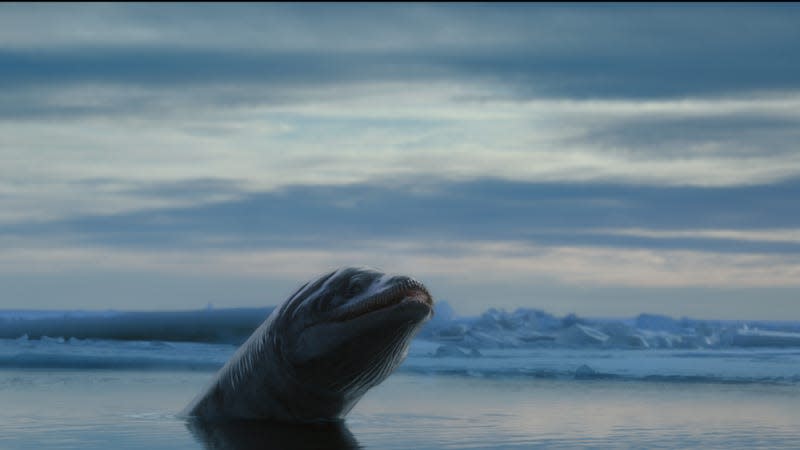
An eerie view of Mortuneria, a cold water plesiosaur.
The creepily monikered Mortuneria was a plesiosaur that lived in the frigid waters of Cretaceous Earth’s southern hemisphere. Mortuneria is not the first plesiosaur to grace the show; last season featured a group of plesiosaurs that swallowed stones, which helped the small-toothed creatures digest their food.
Xiphactinus
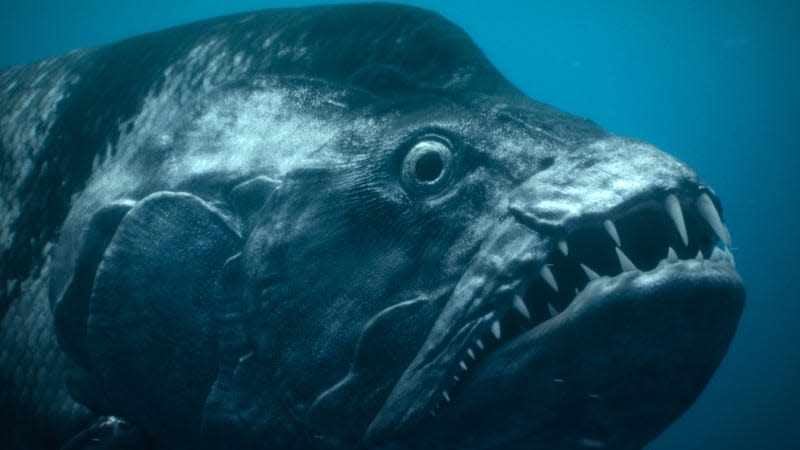
The new season also features fish—namely Xiphactinus, a rather terrifying ocean dweller. Looking every bit like someone gave a grouper a set of fake vampire teeth, Xiphactinus may have grown up to 20 feet long (that’s about the size of the largest great white sharks). It’s a nope for me, dog. I mean fish.
Hesperornis
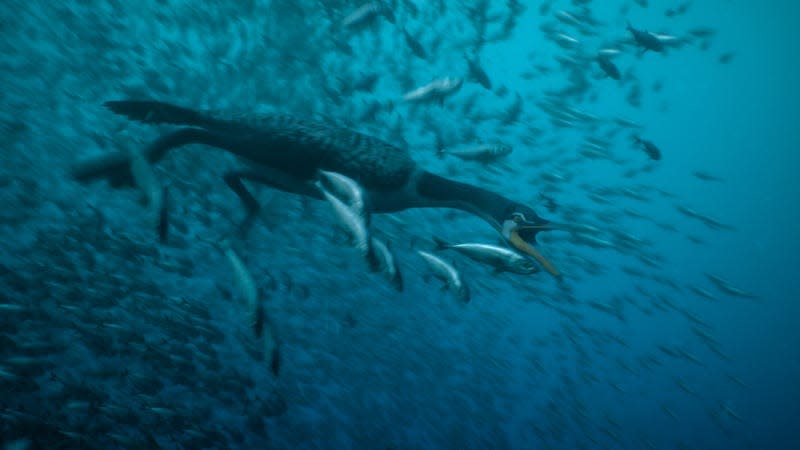
There’s something odd about this bird—can you tell? Hesperornis was not only flightless but wingless. So it was really, really flightless. A powerful diver and swimmer, the unique animal is seen here hunting fish.
Pachycephalosaurus
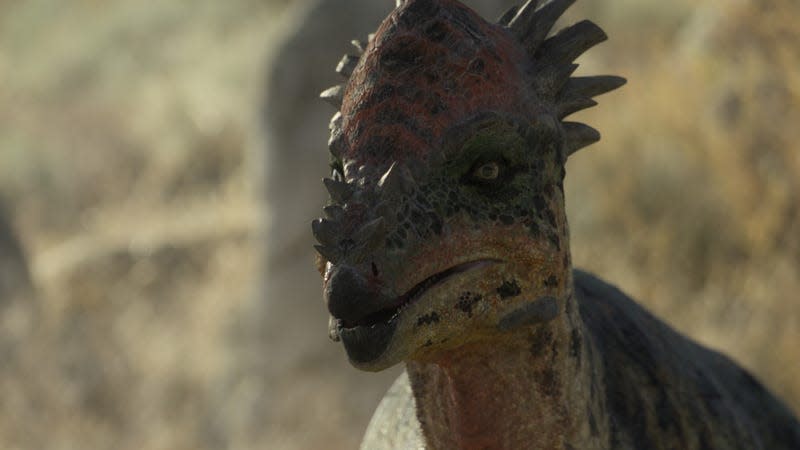
This Pachycephalosaurus is representing the group of Late Cretaceous dinosaurs known for their bony domed skulls, which the animals may have used in battles for dominance or in mating.
Rapetosaurus
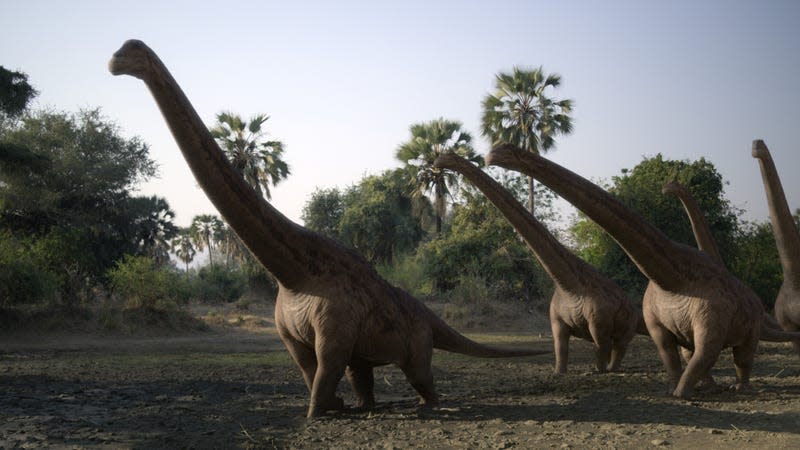
Rapetosaurus was a Cretaceous titanosaur species native to Madagascar. Here, a group of the animals are seen tromping across the island’s terrain.
Rajasaurus
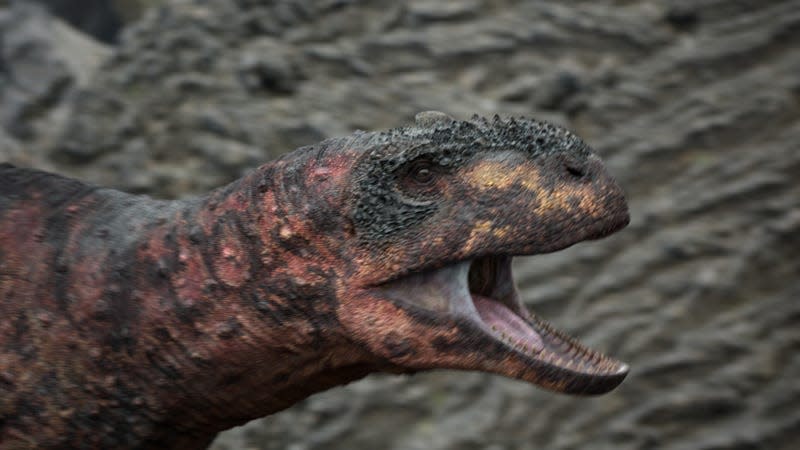
A photorealistic Rajasaurus from Prehistoric Planet’s second season.
Rajasaurus was a carnivorous theropod that lived during the Late Cretaceous. Seen here with its jaw open, revealing sharp teeth, the Rajasaurus would have been a fearsome predator in its day.
Imperobator

Hatzegopteryx
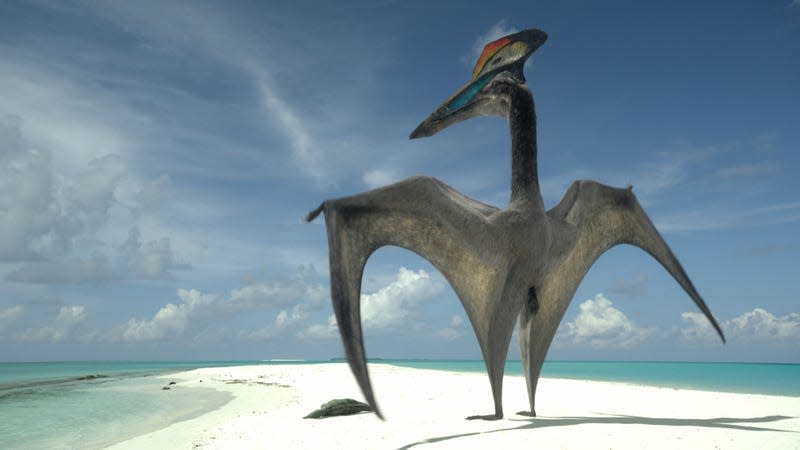
Velociraptor
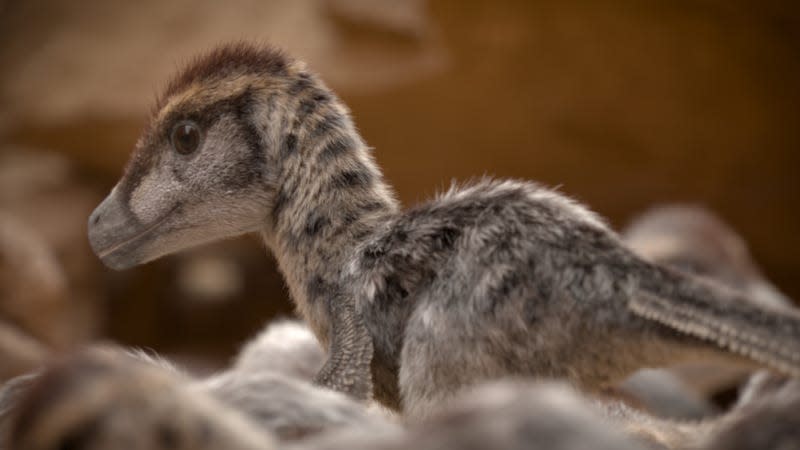
Yes, it’s small, but that doesn’t mean it can’t hurt you... with cuteness.
Austroraptor
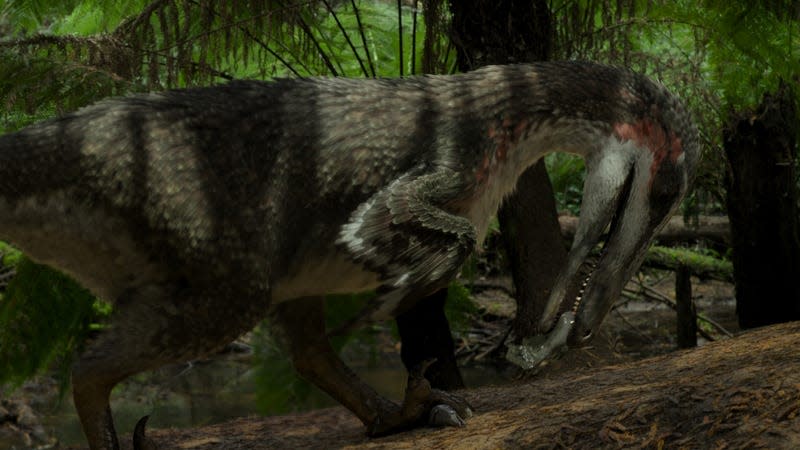
More from Gizmodo
Sign up for Gizmodo's Newsletter. For the latest news, Facebook, Twitter and Instagram.

